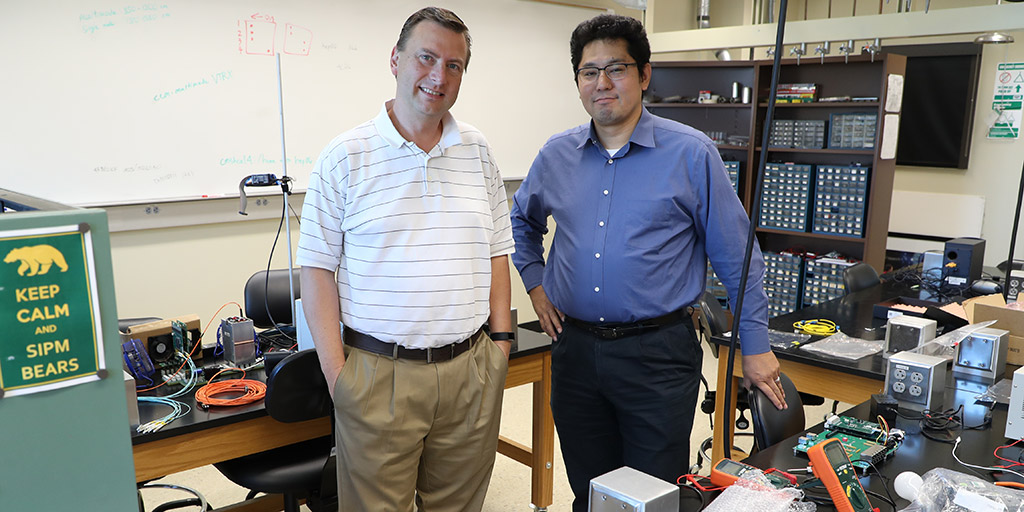Baylor physicists helping discover the building blocks of the universe

More than five years have passed since an international team of scientists — including several Baylor physicists — discovered what’s become known as the “God particle.” Today, scientists are working on the next steps in uncovering further mysteries of physics — and the same Baylor professors are still helping advance the research.
Drs. Jay Dittman and Kenichi Hatakeyama, both associate professors of physics at Baylor, were part of a team from just 50 institutions worldwide that worked on the exact experiment that detected the Higgs Boson particle. The next question for Dittman, Hatakeyama and other scientists working with the European Organization for Nuclear Research (CERN) became, “What do these discoveries have to do with everyday life?”
Baylor physicists working on the project — including undergraduate students such as John Lawrence, Andrew Baas and Jordan Potarf, all senior physics majors — use the information to examine the fundamental nature of matter and energy, test whether new theories are correct, and see if they can provide explanations for concepts we still don’t fully understand.
For instance: The Higgs Boson particle’s discovery was important in part because it completed what’s known as the Standard Model puzzle; it was the last of a predicted set of elementary particles that interact with each other and help explain the origin of mass of all the other elementary particles. Another theory, however, doubles the number of particles in the Standard Model; the hypothesis is that each particle has a partner “shadow particle” that is far larger. If true, this could help explain “dark matter,” a hypothetical matter that (unlike most matter) does not interact with light; it is invisible and unobservable beyond drawing inferences from its gravitational effects and other measurable factors. The Baylor team is using what’s been uncovered so far to search for evidence that would support this theory (known as “supersymmetry“).
“I think that what we learn about the universe just points to the wonder of Creation,” says Dittman. “I think this area of science is so big; we’re studying tiny particles, but we’re also studying the nature of the universe, and it’s just awe-inspiring. I think that’s one big appeal for me.”
While thousands of scientists around the world are working on CERN projects, their unique setup gives each team member, from well-known scientists to the students working alongside them, a distinct sense of contribution to the project. The next time you hear about “the God particle” or supersymmetry in a news report, you’ll know that Baylor is helping advance the understanding of scientists around the world on these and other important topics.
Sic ’em, Baylor physicists!

